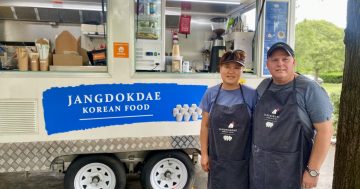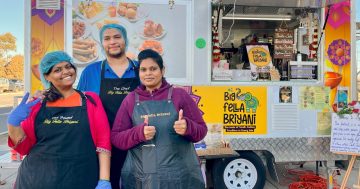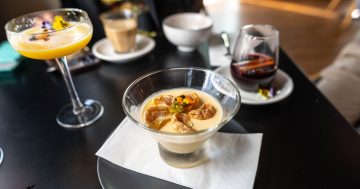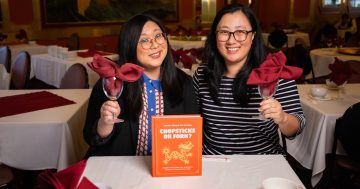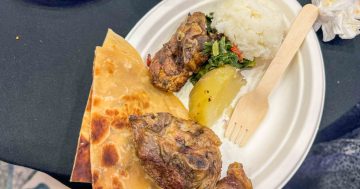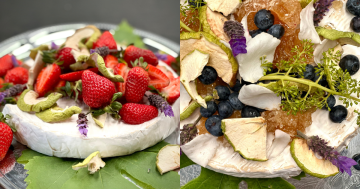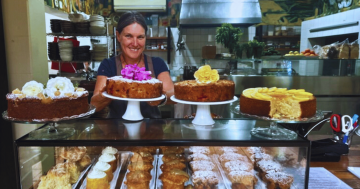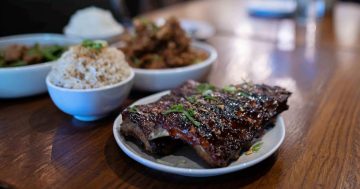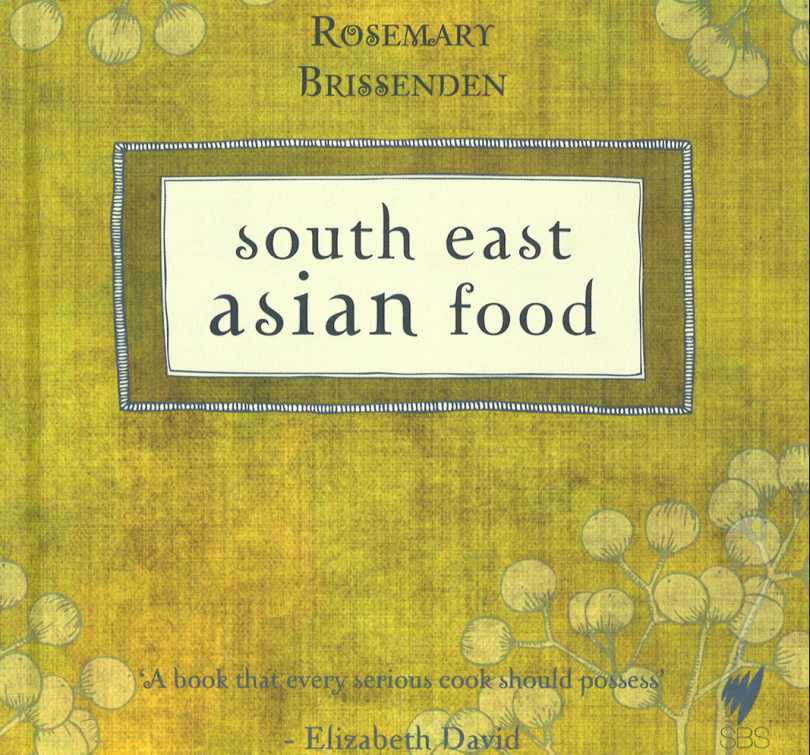
South East Asian Food was a pioneering volume in English. Image: File.
Veteran ABC correspondent Michael Brissenden remembers the same childhood diet as many of us – plenty of chips and peas, he says.
But on special occasions, something remarkable happened at his parents’ 1970’s suburban Canberra dinner parties: a spectacular Asian feast would appear, featuring ingredients that were a mystery to family and friends alike.
Rosemary Brissenden was an unlikely pioneer of Asian food in this country. A political scientist, she first visited Indonesia as a student in the late 50s, when she was billeted with families.
The experience hooked her on Indonesian food and kickstarted a lifelong fascination with Asian food and the culture, which would result in one of the great authoritative cookbooks of its time, South East Asian Food. It’s been in print and selling steadily for 50 years.
Rosemary studied Indonesian and moved to the ANU as a researcher in international relations where she undertook fieldwork in South East Asia and married Bob Brissenden.
She’d begun writing a food column for the Australian, and Penguin approached her to suggest a book. South East Asian Food was published in 1969 in Australia and the UK, reprinted seven times in the 1970s and early 1980s and published in the US. No less a luminary than Elizabeth David provided an endorsement.
“She was ahead of her time and everywhere she went she’d get people to cook for her,” Michael says of his mother, now 87. “She’d help and write down the recipes, she took quite an academic approach to it.
“It was a labour of love. She fell in love with the food but also the cultural traditions and heritage around food.
“Other authors like Charmaine Solomon came later, but her book was really the first of its kind in many ways, one of the first in the English language. It made quite a big stir.”
Rosemary’s recipes were “exacting but rewarding”. Michael says his mother had no truck with substitutes or, when it arrived later on, Asian fusion cuisine.
“I do remember going to Sydney with her and shopping in Chinatown for ingredients,” Michael says. “None of that was available in Canberra at the time, and you had to hunt those things out.
“She was at heart a very academic person. She took great pride in the book being contextual, there’s a lot of talk about the cultural importance of food.”
When Vietnamese refugees began arriving in large numbers, bringing their sophisticated and delicious food with them, Rosemary was delighted that Australians were embracing Asian food and, with it, Asian culture.
The book was updated with further research after Rosemary took herself off to a remote village in northern Thailand in the 1990s to record the food and traditions of the region before they disappeared.
“The first edition mostly focussed on Indonesia, Malaysia and Singapore, but the bigger book included food from Vietnam, Laos and Cambodia,” Michael says.
“She loved lots of food but she particularly loved Thai food’s complexity and grand sweep, how diverse and regional it is.
“I think she was very very well regarded in the culinary establishment. Elizabeth David knew her work, people like Martin Boetz from Longrain were big fans. She was well known and well respected in that world.”
Michael is going through more of a European food phase himself but says, when he wants to cook Asian, there’s nothing better than his mother’s recipes. Her rendang recipe is, he says, “amazing”.
Rendang negri simbalan.
INGREDIENTS
- 1kg beef topside, cut into 4 cm cubes
- 3 cups all-purpose coconut milk
- 1 stalk lemongrass, bruised
- 1 piece dried tamarind
- 4 tablespoons grated fresh coconut, roasted in a dry pan until brown and oily then finely ground (kerisik)
salt
PASTE SPICES
- 15-20 medium-sized dried chillies, soaked or 4-5 teaspoons dried chilli flakes
- 2 stalks lemongrass
- 2cm piece fresh turmeric or 1 turmeric leaf
- 2cm piece ginger
- 6 medium-sized garlic cloves
- 12 shallots
METHOD
To prepare the spice paste finely pound the spices. Mix the beef well with the spice paste and leave aside for 15 minutes. Transfer to a wok, add the coconut milk, lemongrass and dried tamarind. Bring to the boil, stirring all the time, then simmer, continuing to stir, until the gravy has thickened.
Add the kerisik, turn the heat down to low and simmer, still stirring occasionally, until the meat is tender and the gravy really thick but not dry. In Malaysia this might take 4–5 hours with local meat, especially when buffalo is used. Beef is usually more tender, however, and you should achieve the right tenderness in little more than one hour and may wish to use less coconut milk to bring the gravy to sufficient thickness in time. Add salt to taste and serve.
Original Article published by Genevieve Jacobs on Riotact.


